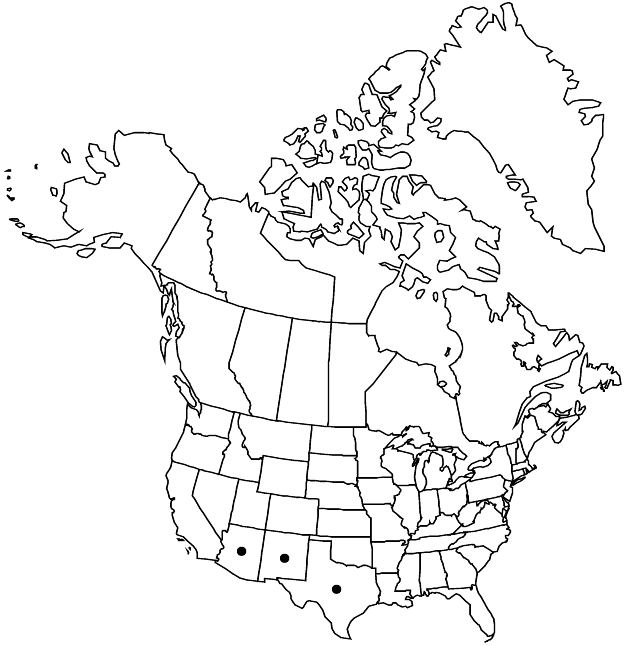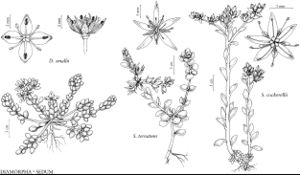Sedum cockerellii
in N. L. Britton and J. N. Rose, New N. Amer. Crassul., 41. 1903,.
Herbs, perennial, tufted, glabrous. Stems rootstocks, erect, rarely branched, (smooth or papillose), bearing erect shoots and axillary rosettes. Leaves alternate, spreading to ascending, sessile; blade green or yellow-green, sometimes glaucous, obovate or oblong-spatulate, laminar, 9.5–15 × 1.5–3.5 mm, base spurred, not scarious, apex rounded to obtuse, (surfaces papillose). Flowering shoots erect, simple, 5–10 cm, (sometimes papillose distally); leaf blades oblanceolate-elliptic, oblanceolate-oblong, or spatulate, base short-spurred; offsets not formed. Inflorescences 3-parted cymes, (4–)10–27-flowered, 1–3-branched, sometimes monochasially; branches ± arched, spreading, or sometimes recurved, sometimes forked; bracts similar to leaves, smaller. Pedicels 1–3.5 mm. Flowers 5-merous; sepals erect to spreading, distinct basally, yellow-green to yellow, lanceolate-linear or clavate-oblong, unequal, 4.5–12 × 1.4–2.6 mm, apex acute or obtuse, (papillose); petals erect, curving upward distally, distinct, rarely slightly connate, white streaked with pink, lanceolate-elliptic, not carinate, 5–8 mm, apex obtuse, with minute mucronate appendage; filaments white; anthers purple or brown; nectar scales yellow or creamy white, square. Carpels erect in fruit, distinct, pale brown. 2n = 28, 30, 32, (34), 58, 64.
Phenology: Flowering late summer–early autumn.
Habitat: Pine forests in high mountains, shallow soils, usually in shade
Elevation: 1600-3200 m
Distribution

Ariz., N.Mex., Tex.
Discussion
Mature carpels of Sedum cockerellii have conspicuous, divergent beaks.
Selected References
None.
